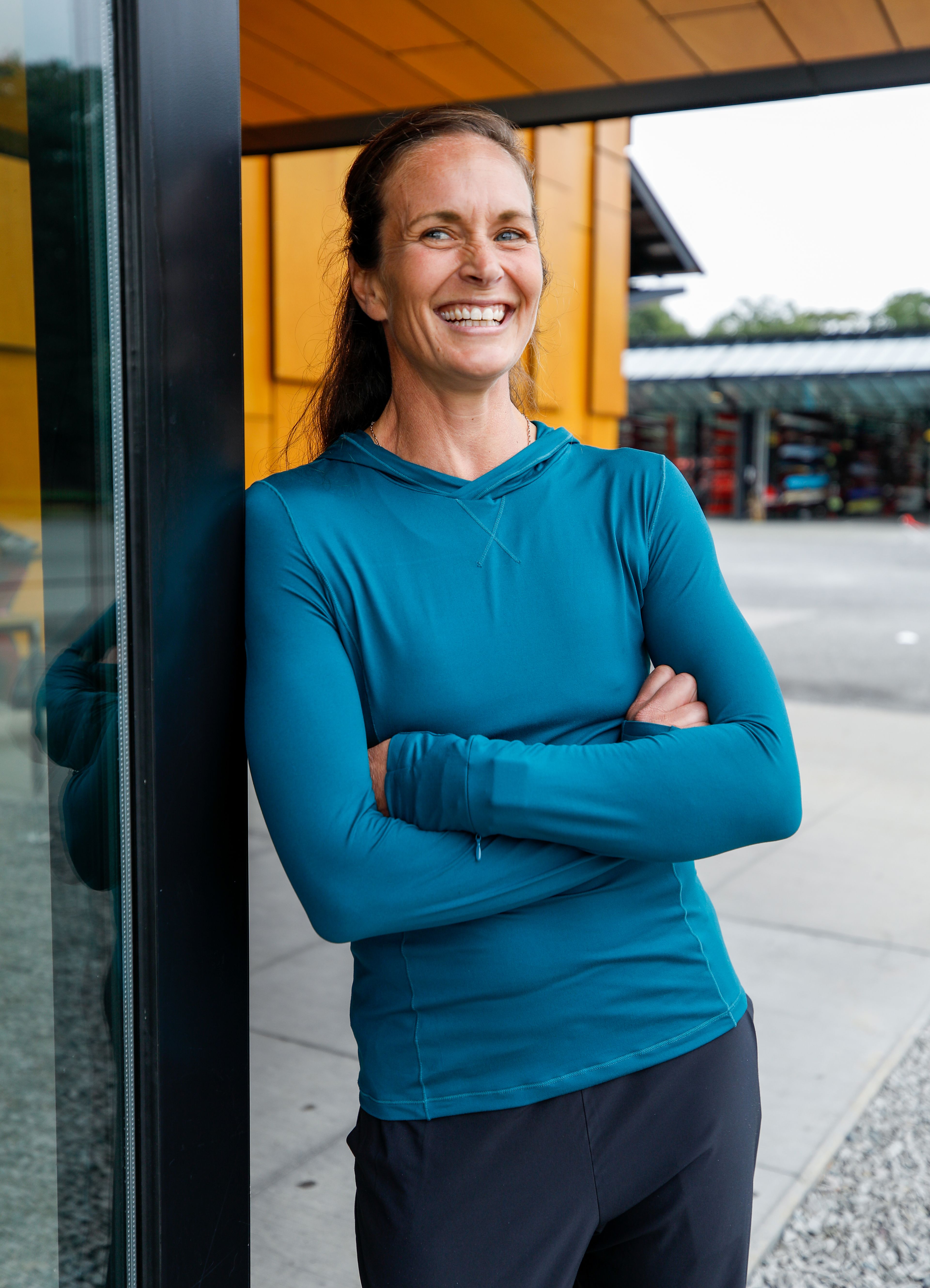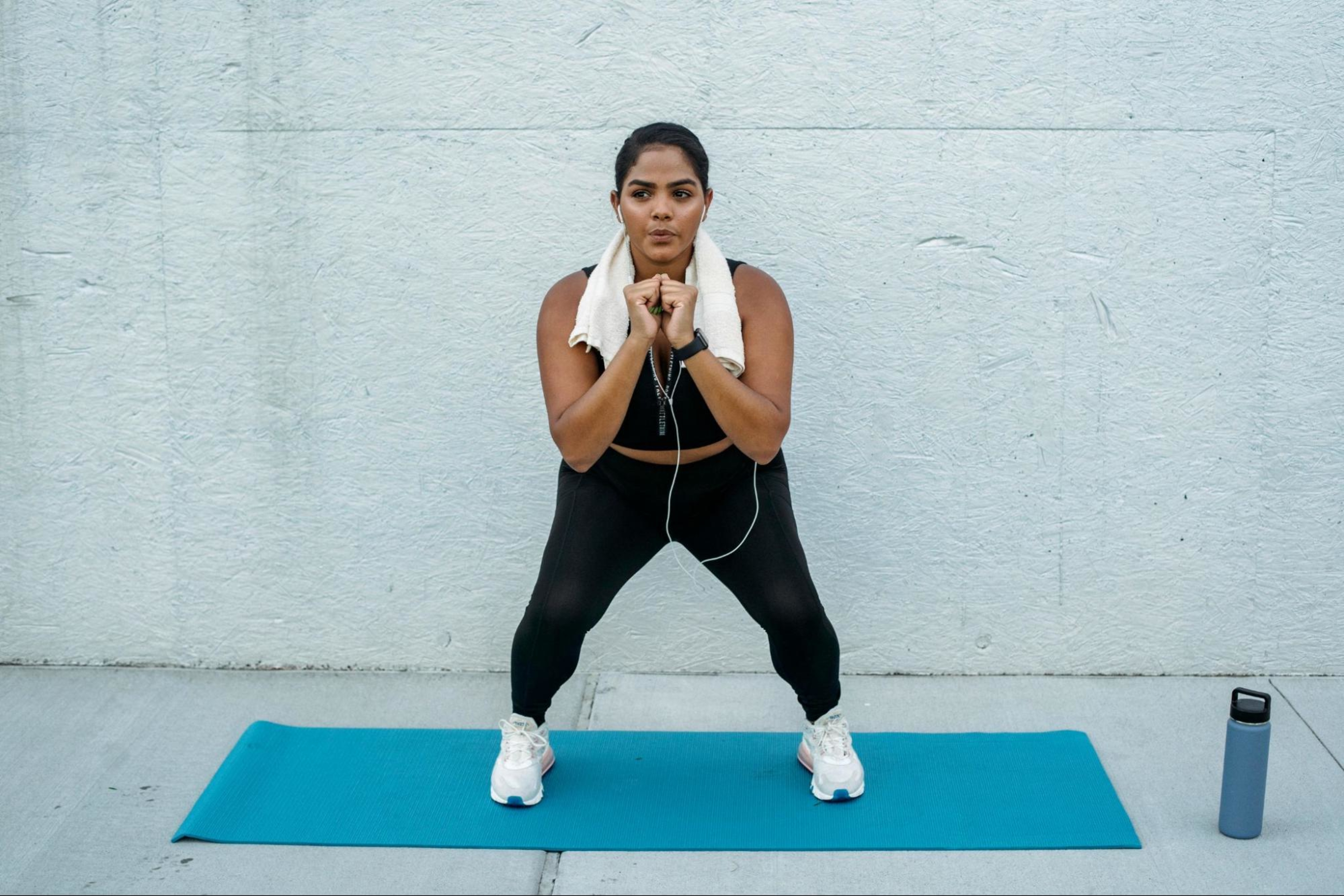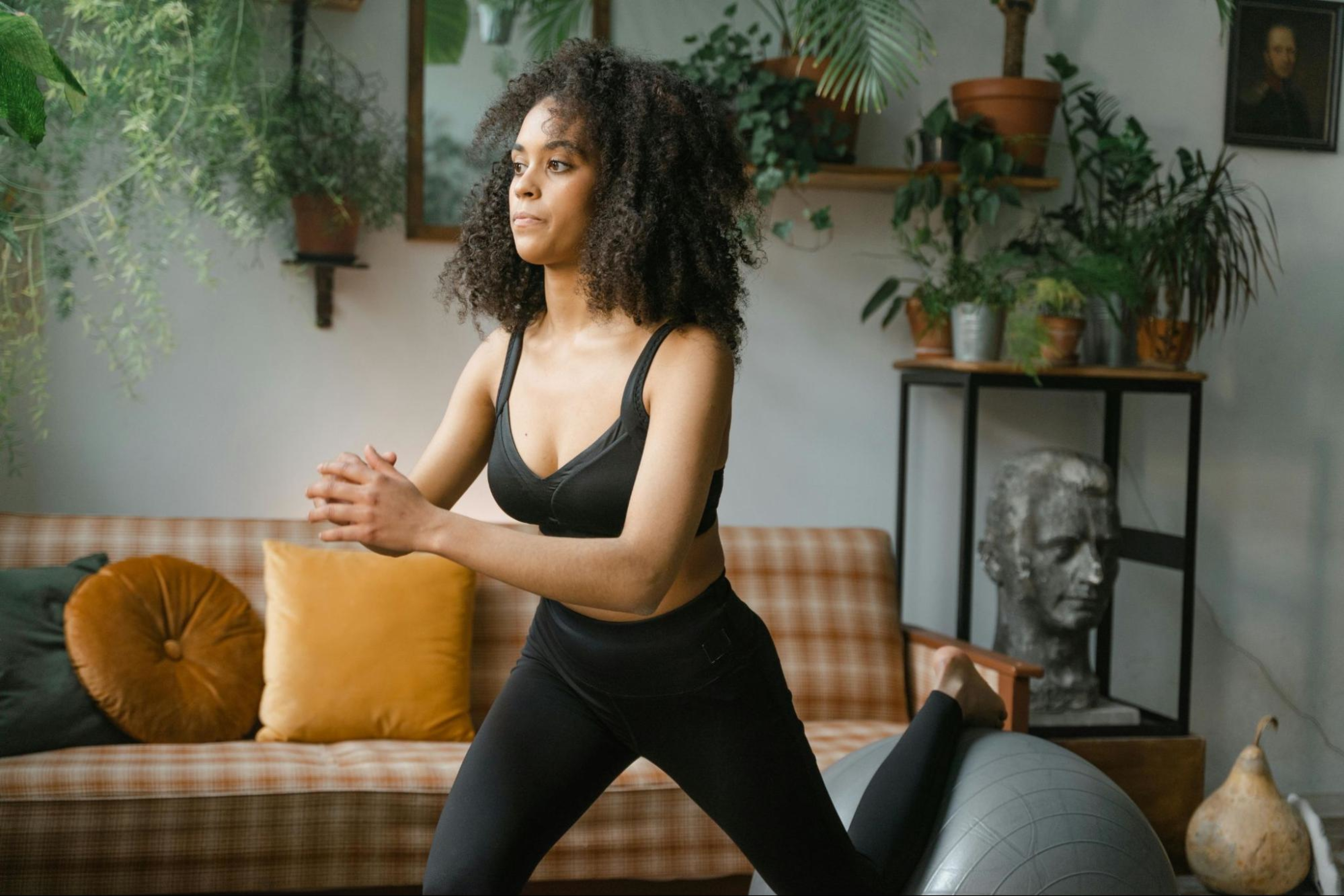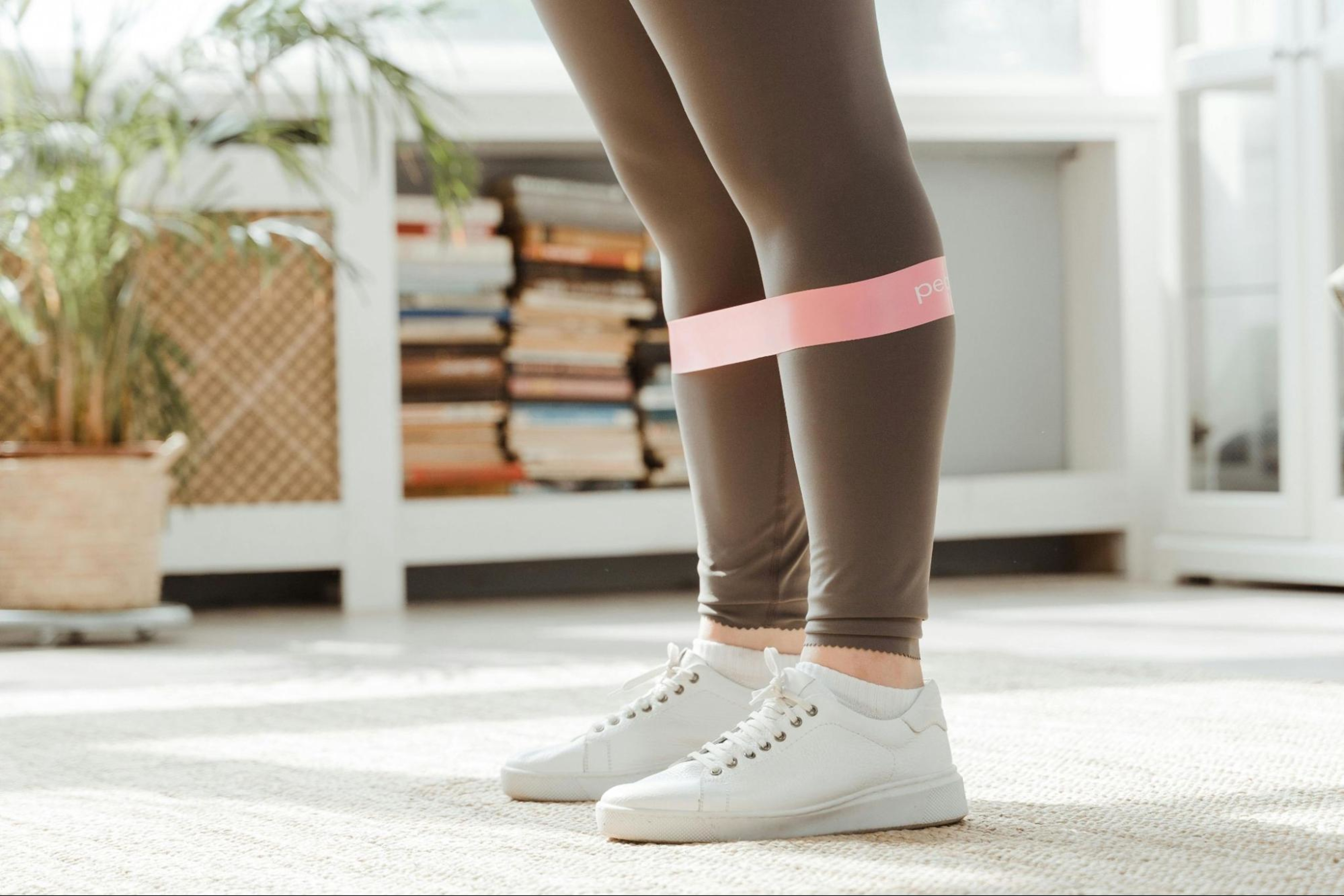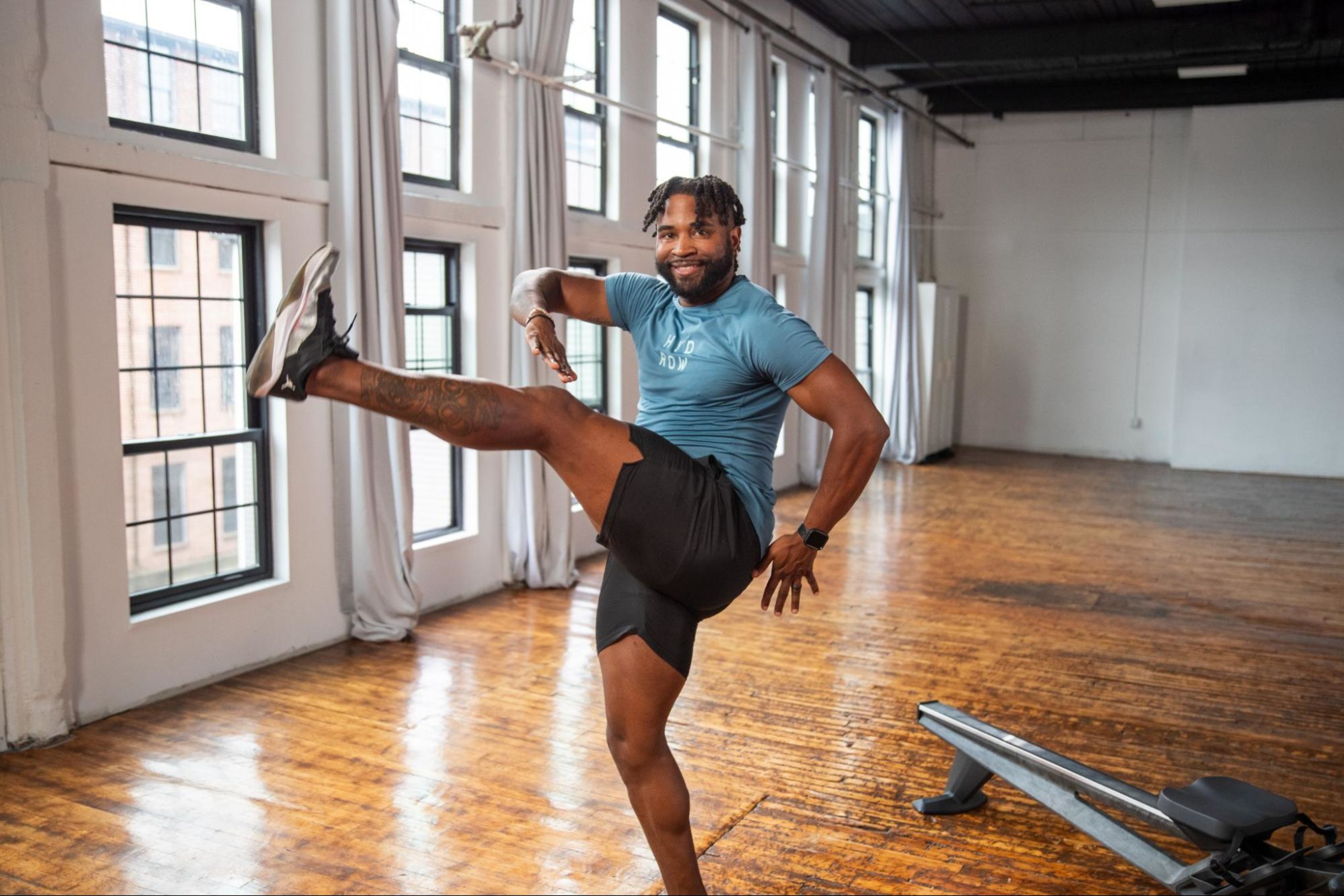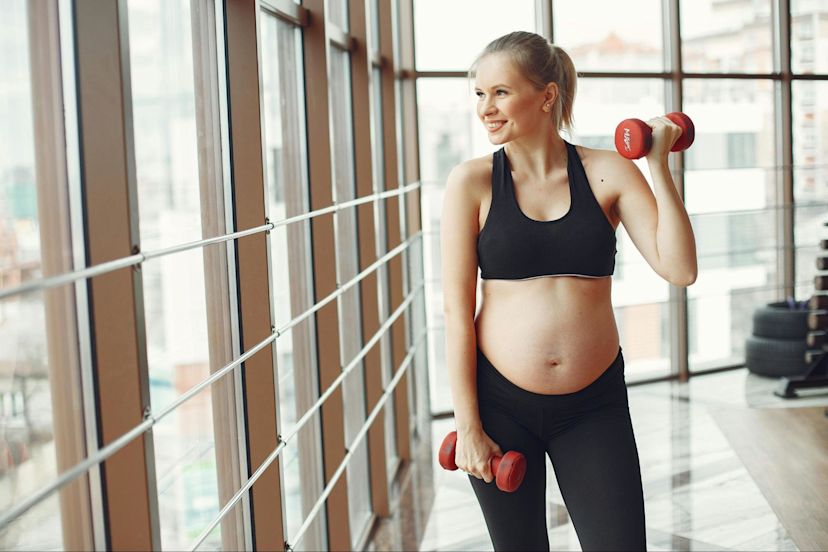12 Easy Leg Exercises for Strength Training Beginners
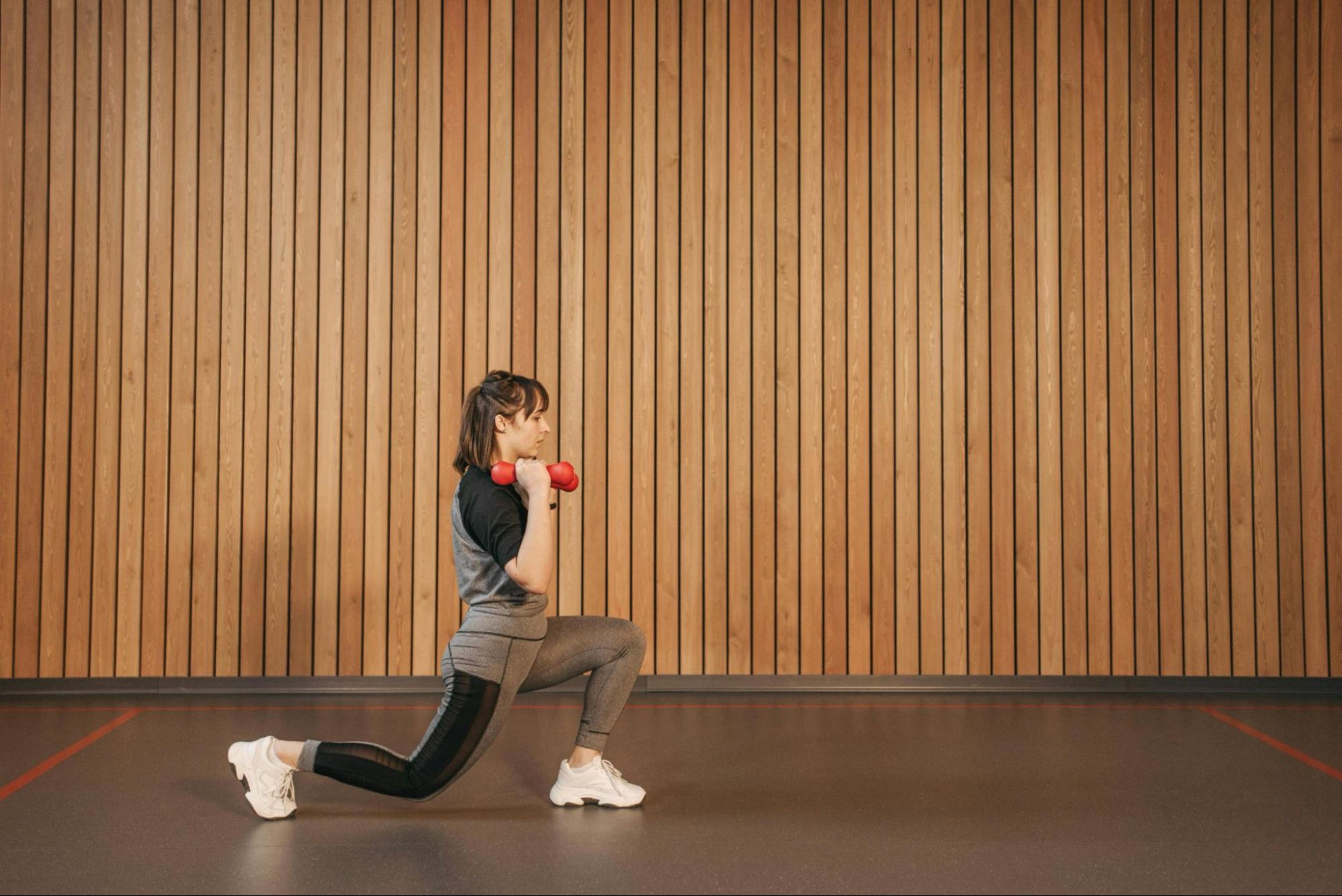
Building strong legs is foundational for overall fitness and daily life. Your legs power nearly every movement, such as walking, climbing stairs, running, and jumping. Strong leg muscles improve balance, stability, and coordination, making everyday activities easier and reducing the risk of falls and injuries, especially as you age. Additionally, leg strength supports healthy joints, boosts your metabolism, and helps prevent common injuries by providing better support and shock absorption for your knees and hips.
If you’re a beginner looking to strengthen your legs, starting with simple leg exercises is key to allowing your muscles and joints to adapt gradually and minimizing your risk of soreness or injury. As you build consistency and confidence, you can progress to more challenging movements and heavier weights, laying a solid foundation for lifelong strength and mobility.
Below, we’ll cover 12 easy bodyweight leg exercises for beginners, as well as tips for progressing these leg exercises once the movement pattern has been established and you’re ready to add weights.
Let’s get started!
12 easy leg exercises for beginners
Bodyweight exercises are a great starting point for leg strength because they require no equipment and can be done nearly anywhere. These workouts also provide the opportunity to learn the movement and avoid injury by not adding additional weights before your body is ready.
Once you’re comfortable with bodyweight moves, adding weights can help you build more strength. We recommend starting light and focusing on good form before progressing to heavier weights and more complex movements.
Here are 12 beginner-friendly moves that target a variety of leg muscles to help set you up for success:
1. Bodyweight squat
What it works: Quadriceps, glutes, hamstrings, calves, and core.
How to do bodyweight squats:
Stand with your feet slightly wider than shoulder-width apart and engage your core.
Lower your body by bending or hinging at your hips and knees, keeping your chest up.
Descend until your thighs are parallel to the ground while maintaining an engaged core
Push through the soles of your feet with an emphasis on driving through the heels as you return to the starting position.
Level up: Hold a dumbbell in each hand, with your arms straight by your sides before lowering into the squat position.
2. Reverse lunge
What it works: Quadriceps, glutes, hamstrings, and calves (with core engagement required for balance).
How to do reverse lunges:
Start with your feet hip-width apart and engage your core.
Take a large step to the back and bend both knees, ideally the front leg to 90 degrees.
With your weight in the front leg, press the front heel into the ground, returning your back foot to standing.
Alternate sides.
Level up: Hold a dumbbell in each hand with your arms straight by your sides while completing the reverse lunge.
3. Step-up
What it works: Quadriceps, glutes, hamstrings, and calves.
How to do step-ups:
Step onto a bench or stair with one foot.
Drive through your heel to lift your body up.
Step back down and repeat on the other leg.
Level up: Hold a dumbbell in each hand, arms straight by your sides while completing the step-up.
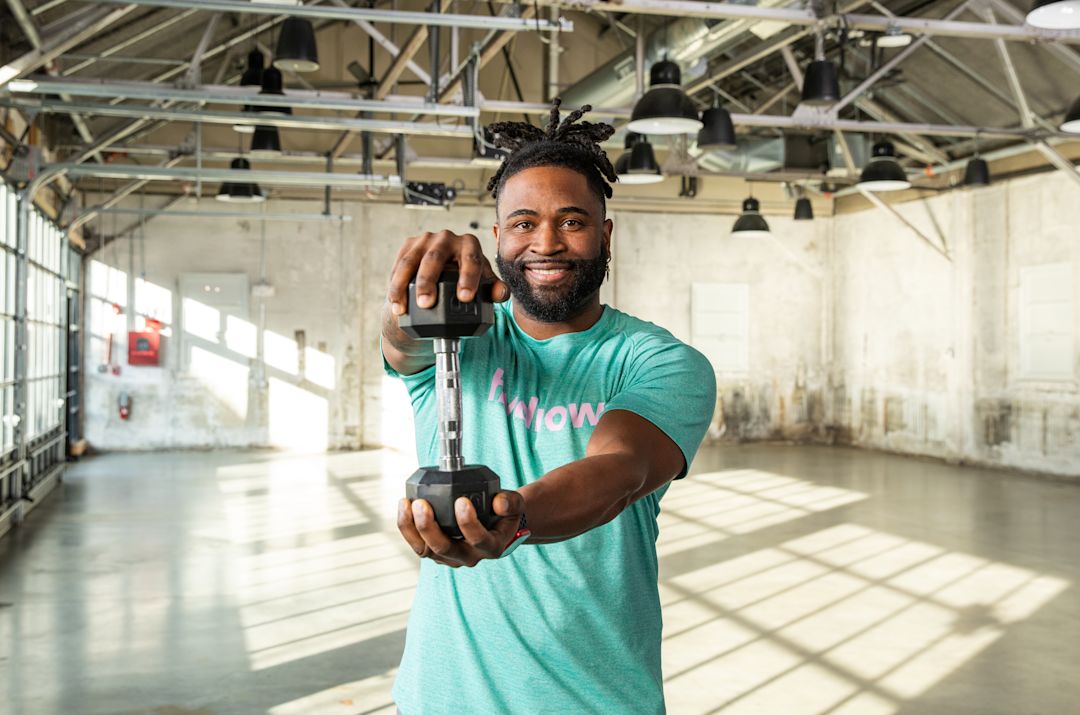
Explore Hydrow's library of strength training workouts.
4. Side lunge
What it works: Quadriceps, glutes, inner and outer thighs.
How to do side lunges:
Start standing with your feet hip-width apart and hands at your chest or on your hips.
Take a big step to the right, keeping your toes pointing forward.
Bend your right knee and push your hips back, keeping your left leg straight.
Lower until your right thigh is parallel to the ground (or as low as comfortable).
Push off your right foot to return to the starting position.
Repeat on the other side.
Level up:
Hold a dumbbell in each hand, with your arms straight by your sides.
As you step to the right and bend your right knee, allow the dumbbells to come to the side of the right foot. Keep your chest up. Your arms should remain straight throughout the movement.
Return to the starting position.
5. Calf raise
What it works: Calves!
How to do calf raises:
Stand with feet hip-width apart, hands on hips or a wall for balance.
Rise up onto your toes, lifting your heels as high as possible, while keeping your body straight.
Pause, then lower back down.
Level up: There are a few ways to make this exercise more challenging:
Add weights: Hold a dumbbell in each hand, with your arms straight by your sides while completing the calf raise.
Increase your range of movement: Start with both feet on a step, with the ball of your foot on the stair and your heel hanging on the edge of the stair. Slowly lower the heel lower than the stair, then begin to lift your heels as high as possible while keeping your body straight.
Use a calf raise machine at a gym: Adjust the pads to rest comfortably on your shoulders, position your feet so the balls are on the platform with heels hanging off, and perform the same slow, controlled motion for a full range of motion.
6. Front lunges
What it works: Glutes, quadriceps, hamstrings, and calves.
How to do front lunges:
Stand tall with your feet hip-width apart.
Step forward with your right foot, lowering until both knees form 90-degree angles.
Keep your torso upright and core engaged.
Push through your front heel to return to the starting position.
Repeat on the opposite leg.
Level up: Hold a pair of dumbbells at your sides or add a twist toward your front leg at the bottom of each lunge.
7. Glute bridges
What it works: Glutes, hamstrings, and lower back.
How to do glute bridges:
Start lying down on your back on a mat or other cushioned surface.
Bend your knees and plant your feet hip-width apart and about six inches from your butt. Your arms can be flat by your sides.
Engage your core by tilting your pelvis slightly forward.
Press through your heels to lift your hips up until your body forms a straight line from your knees to your shoulders. Pause here briefly.
Slowly and with control, lower your hips back down.
Repeat.
Level up: Hold a dumbbell over your hips throughout the movement or do a single leg glute bridge by lifting and straightening one leg, then pressing into the other heel to raise hips off the floor.
8. Clamshells
What it works: Glutes and hips.
How to do clamshells:
Lie on your side with your legs stacked, knees bent about 90 degrees, and hips aligned.
Rest your head on your bottom arm, with your top hand placed on the floor in front of you for stability.
Engage your core and keep your feet touching.
Lift your top knee as high as you can without moving your pelvis or lower back.
Pause briefly at the top, then slowly lower your knee back down.
Repeat, then switch sides.
Level up: Loop a resistance band just above your knees. Perform the movement as described, focusing on slow, controlled lifts to maximize tension.
9. Standing hamstring curl
What it works: Hamstrings and glutes.
How to do a standing hamstring curl:
Stand tall, holding onto a chair or wall for balance.
Shift weight to one leg, bend the other knee, and bring your heel toward your glute.
Lower back down and repeat.
Level up:
Loop a resistance band under standing foot and around your other ankle or hook it to a sturdy anchor behind you and around one ankle.
Stand tall, engage your core, and hold onto a wall or chair for balance.
Curl your heel toward your glutes against the band’s resistance, pause briefly, then slowly lower.
Repeat for all reps before switching legs.
You can also level up using a leg curl machine if you have access to one at a gym.
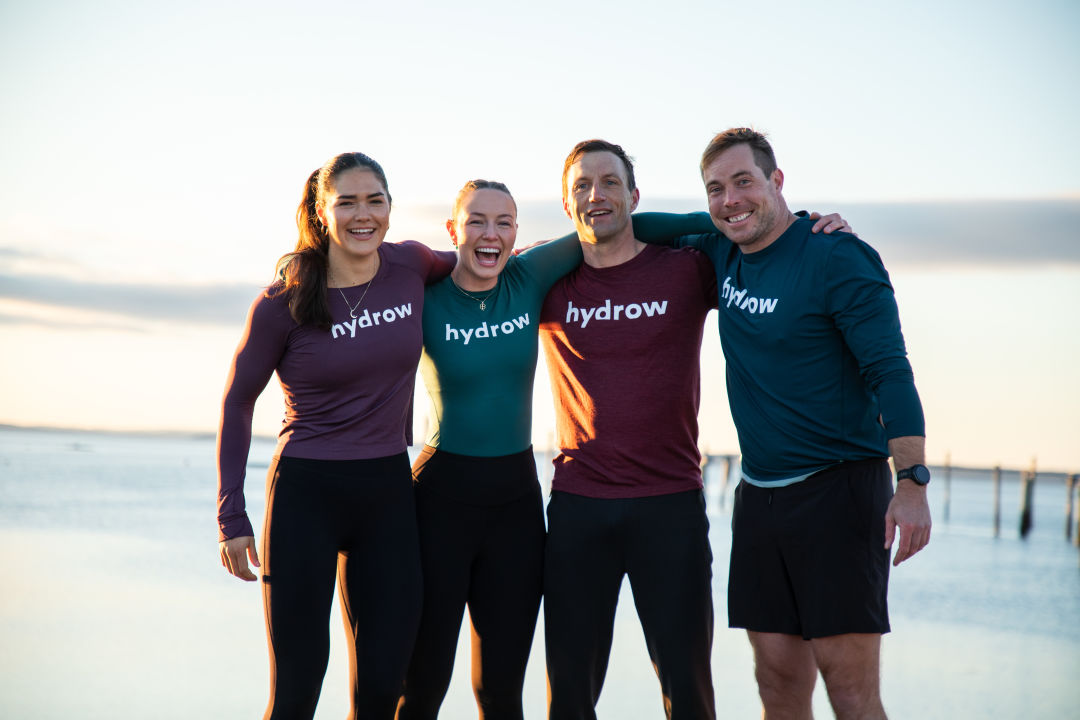
Explore Hydrow’s library of 5,000+ rowing, circuit training, yoga, Pilates, and mobility workouts.
10. Deadlift
What it works: Hamstrings, glutes, lower back, and core.
How to do deadlifts:
Stand with your feet hip-width apart.
Hinge at the hips, pushing your butt back while keeping your back flat. Engage your core.
Keep your arms straight and moving along your thigh towards your knees and shins until you feel a pull in the back of the legs.
Squeeze your glutes to return to standing.
Repeat.
Level up: Hold a dumbbell or barbell in front of your thighs. Proceed with the deadlift movement, moving the dumbbells toward the floor and then returning to the start position.
11. Standing leg lifts
What it works: Glutes, hip abductors, and core.
How to do standing leg lifts:
Stand tall with your feet hip-width apart, holding onto a wall or sturdy surface for balance if needed.
Shift your weight onto your left leg.
Keeping your right leg straight and toes pointed forward, lift it out to the side as high as you can without leaning your torso in the opposite direction (keep your body vertical).
Pause briefly, then lower slowly with control.
Repeat for all reps on one side before switching legs.
Level up: Loop a resistance band around your ankles and perform the movement slowly to maintain tension throughout the lift. Another option is to use an abduction machine.
12. Walking lunges
What it works: Glutes, quadriceps, hamstrings, and calves.
How to do walking lunges:
Stand tall with your feet hip-width apart and hands on your hips or at your sides.
Step forward with your right foot, lowering your body until both knees are bent at 90 degrees.
Your back knee should hover just above the ground, and your front knee should be stacked over your ankle.
Push through your front heel to bring your back leg forward into the next lunge. Keep your core engaged throughout the movement.
Continue alternating legs as you move forward.
Level up: Hold a pair of dumbbells at your sides or a kettlebell in front of your chest as you lunge forward.
Tips for structuring an exercise routine with easy leg exercises
Before you jump feet first into your new leg routine, there are a number of strategies to keep in mind to protect your body and your progress. Consider the following tips:
Warm up first: Begin with 5–10 minutes of light cardio (like brisk walking, cycling, or rowing) and dynamic stretches to prepare your muscles and joints.
Start with bodyweight: Master the basic movements before adding complexity through weights and resistance.
Focus on form: Quality matters more than quantity. Move slowly and with control to prevent injury.
Rest between sets: Take a minimum of 60 seconds between sets to recover.
Train legs 1–2 times per week: If you’re strength training 2–3 times per week, focus on your lower-body muscles at least one of the days. Alternating between your upper and lower body allows adequate recovery and muscle growth in between leg training days, while overtraining can lead to injuries and plateaus.
Progress gradually: Once exercises feel easy, increase reps, sets, or add light weights.
Cool down: Finish with gentle stretches to aid recovery and flexibility.
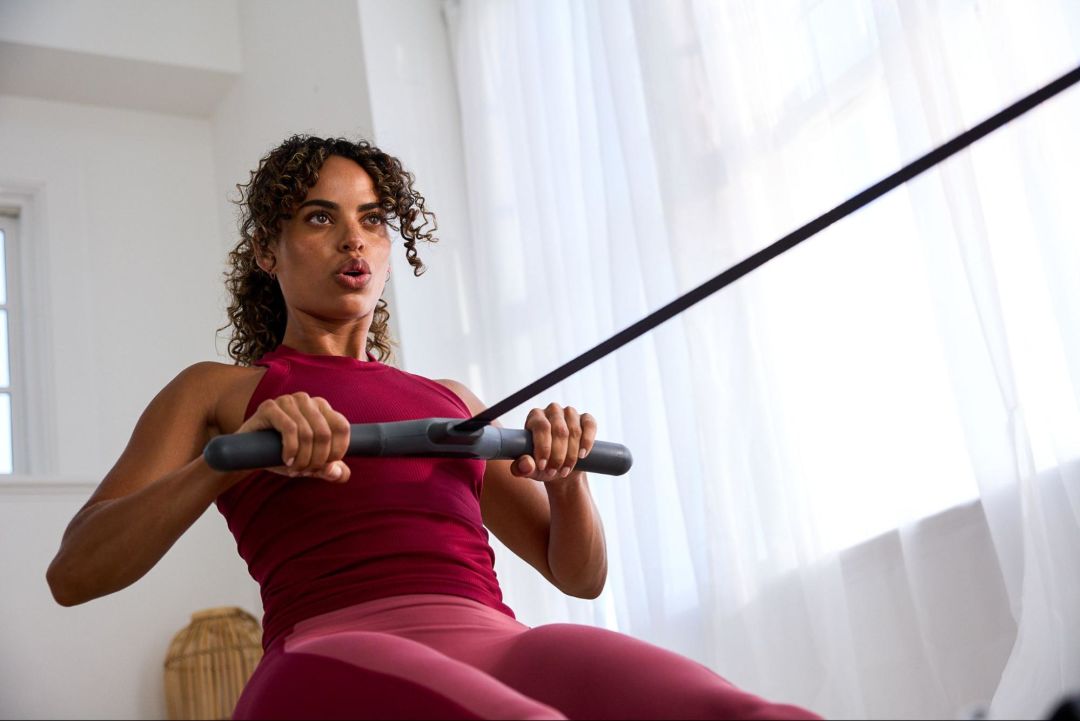
Efficiency for the win.
Work 86% of your muscles in just 20 minutes of rowing with Hydrow.
Sample beginner leg exercise routine
Once you familiarize yourself with the exercises, here is a sample leg routine that you can try at home or in the gym, initially starting with bodyweight and gradually integrating weighted exercises. Do not be surprised if you feel more comfortable with some exercises than others—you can alternate between using weights or just your own bodyweight depending on your comfort level with each exercise.
Warm-up (5 minutes):
March or jog in place for 1 minute
Side steps: Step to the side with one foot, follow with the other, then repeat in the other direction for 1 minute.
Arm swings: Extend your arms out and back, then bring them across your body in a hugging motion for 1 minute.
Full-body reach and squat: Reach for the sky, then squat down and touch the floor. Repeat for 10 reps.
Burpees: Reach arms overhead, then reach toward your toes (bend knees as needed). Place palms on the floor, step feet back one at a time into a straight-body plank, step feet forward one at a time, then reach overhead again. Repeat for 5 reps.
Leg workout: 2 sets of 10 reps each for a 20-minute workout
Bodyweight squats
Reverse lunge (complete reps for each leg)
Side lunge (complete reps in each direction)
Deadlift
Calf raise
Glute bridge with dumbbell
Cool-down: 5 minutes of stretching and/or light walk.
Tips:
Rest for 60–90 seconds between sets.
Focus on full range of motion and controlled tempo.
Adjust weights to maintain good form throughout, yet optimally challenge yourself.
You’re ready to go!
Building leg strength is one of the best investments you can make in your overall health, fitness, and athletic performance. By starting with easy exercises and progressing gradually, you’ll develop a solid foundation for more advanced moves.
Ready to take your training further? Hydrow offers guided strength training workouts for every fitness level, all led by world-class Athletes who coach you through each movement and help you stay consistent. Additionally, our rowing workouts target 86% of your muscles with every stroke, delivering full-body training and real results.
Explore Hydrow’s strength workouts and see how far you can go.
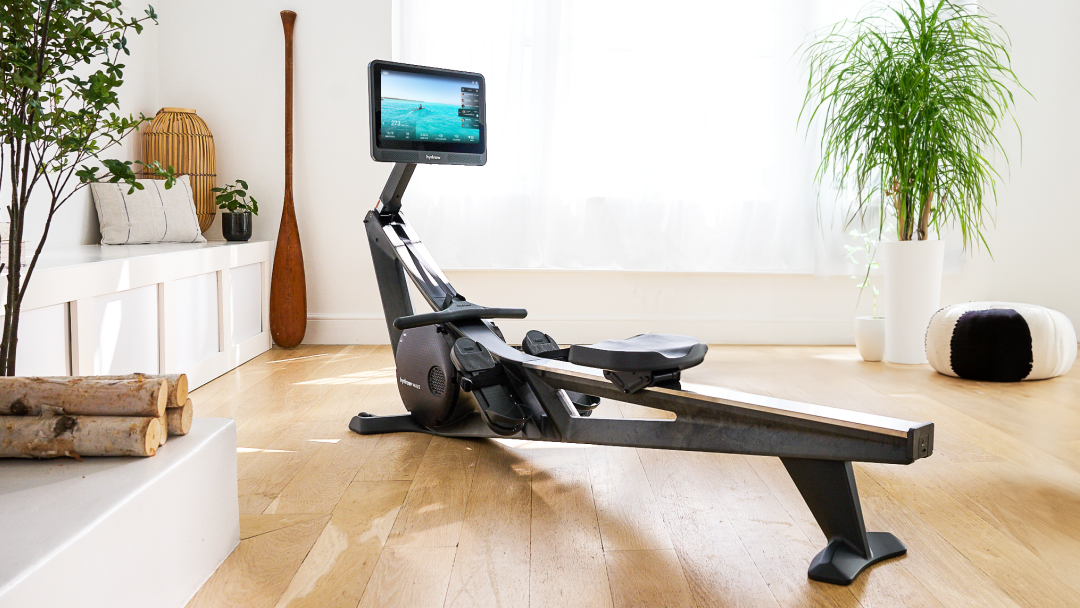
Real strength keeps moving
Learn how working out with Hydrow can help support a fuller, more active life.
